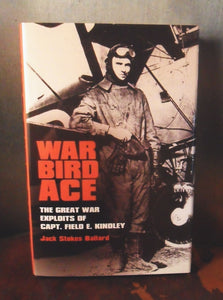Knights Without Parachutes
Dangerous jobs that people think are safe and easy
In Cornell University's list of World War 1 dead is Stuart Emmet Edgar. Edgar didn't actually graduate; he was in the class of 1913 but "left in 1911 to enter business". In 1916 he quit work as a reporter on the New York Evening Sun to become an ambulance driver in France. After America joined the war he transferred to French aviation and in January 1918 was at the front as a corporal in "Escadrille Lafayette 158". (I haven't found out yet whether that was the same thing as the famous Lafayette Escadrille, which had several different names over the course of...
7 Outstanding Qualities of World War 1 Pilots
As World War 1 began, nobody had any personality type research to say where to find great fighter pilots. In fact, at the beginning of the war, there wasn't even an obvious need for fighter pilots; that developed over the course of the war as planners realized the value of having control of airspace. But over four years, this previously nonexistent career field became the most enduring image of the Great War. Vintage Aero Flying Museum director Andy Parks recognized certain special qualities in WWI pilots even as old men when he met them in the 1970s and 1980s: Loved flying - well,...
Ivy League officers: cost or benefit to USAF? - 2016 perspective
Ivy Leaguers volunteered for the air service in proportionally great numbers a hundred years ago. But, considering the absent-minded professor image, do Ivy Leaguers make good Air Force officers? It's not just an academic question, pun intended. The USAF funds scholarships at various percentages of a school's cost, so is the extra money for an Ivy League education worth it to the USAF? I have been looking up cadets of the late '80s and early '90s on LinkedIn. Thirty years ago, the main kind of AFROTC scholarship was a four-year full ride scholarship to whatever school one could get into. All you had to do...
Before the Red Baron: Leffers, of the original German aces
Gustav Leffers, German ace, will be the subject of this second-Saturday open house talk, Saturday August 13th, at noon during the 10-4 open house at the VAFM. Andy Parks will be speaking about Leffers, one of the original German aces, who was a combat veteran already when the Red Baron was just starting out. Leffers received the "Blue Max" medal, the 11th recipient for Germany. He was killed flying a French plane he had captured. The transcript of last month's talk is almost finished; it is available as "Hard Luck Ace".





